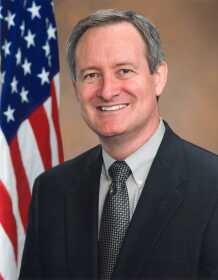Ensuring Broadband resources reach communities that need them

We, without a doubt, rely heavily upon broadband technology for business, government and personal activities. As more Americans have worked from home and homeschooled students during the pandemic, the importance of expansive and reliable broadband technology has been accentuated. Efforts have been underway for some time to address a “digital divide” in broadband deployment between rural and urban or suburban areas to ensure communities, regardless of size, can access these technological advancements. Legislation I co-sponsored was signed into law in March that would help address this divide by improving the accuracy of the Federal Communications Commission’s (FCC) broadband availability maps.
The Universal Service Fund (USF), administered under the direction of the FCC, provides assistance to upgrade existing telephone networks so they are capable of delivering high-speed services. Additionally, the USF, through its Schools and Libraries Program, provides assistance to improve high-speed broadband access at eligible elementary and secondary schools. Concerns have been raised that the geographic mapping the FCC relies on to determine where to allocate funds for broadband deployment in underserved areas, especially rural areas, overstate the availability of broadband. This inaccuracy results in underserved and unserved areas being denied access to broadband funding.
To address this problem, on March 10, 2020, the U.S. Senate passed by unanimous consent S. 1822, the Broadband Deployment Accuracy and Technological Availability (Broadband DATA) Act, with a U.S. House of Representatives amendment. A broad, bipartisan group of 70 senators, including fellow Idaho Senator Jim Risch, co-sponsored this legislation that would require the FCC to change the way broadband data is collected, verified and reported. On March 23, 2020, President Trump signed the legislation into law.
Specifically, the new law requires the FCC to collect broadband maps from wired, fixed-wireless, satellite and satellite broadband providers, and the FCC would be required to use the new maps when making new awards of broadband funding. Strong accuracy constraints are to be placed on the collection of service availability from mobile broadband providers. The FCC could consider the collection of verified coverage data from state, local and tribal governments and other entities. A process would be created for challenging the accuracy of FCC broadband maps. These procedures must not be overly-burdensome on challengers. A crowdsourcing process would be established to allow public participation in data collection, and stronger enforcement mechanisms would be put in place to deter submission of materially inaccurate broadband data.
In addition to the resources available through the FCC, Congress acted in 2001 and 2002 to initiate pilot broadband loan and grant programs through the U.S. Department of Agriculture’s Rural Utilities Service (RUS). RUS administers two assistance programs exclusively dedicated to financing broadband deployment: the Rural Broadband Access Loan and Loan Guarantee Program and the Community Connect Grant Program. On December 20, 2018, President Trump signed into law a five-year reauthorization of the Farm Bill, which extends and provides new funding for these assistance programs.
Enactment of the Broadband DATA Act builds on ongoing efforts to eliminate the “digital divide” by helping to ensure the accuracy of the data used to determine the distribution of broadband resources. This can go a long way in making certain that the rural communities that need broadband availability the most are able to access needed broadband resources.
